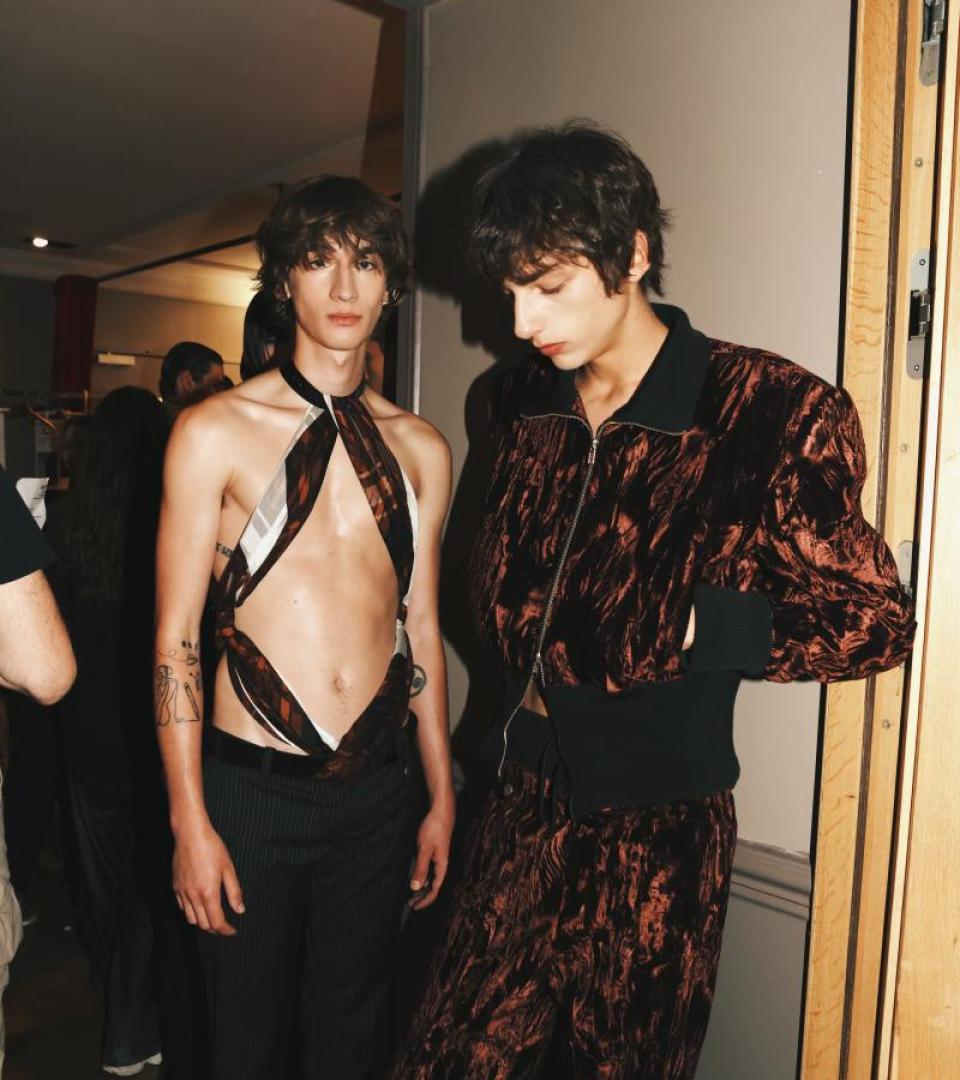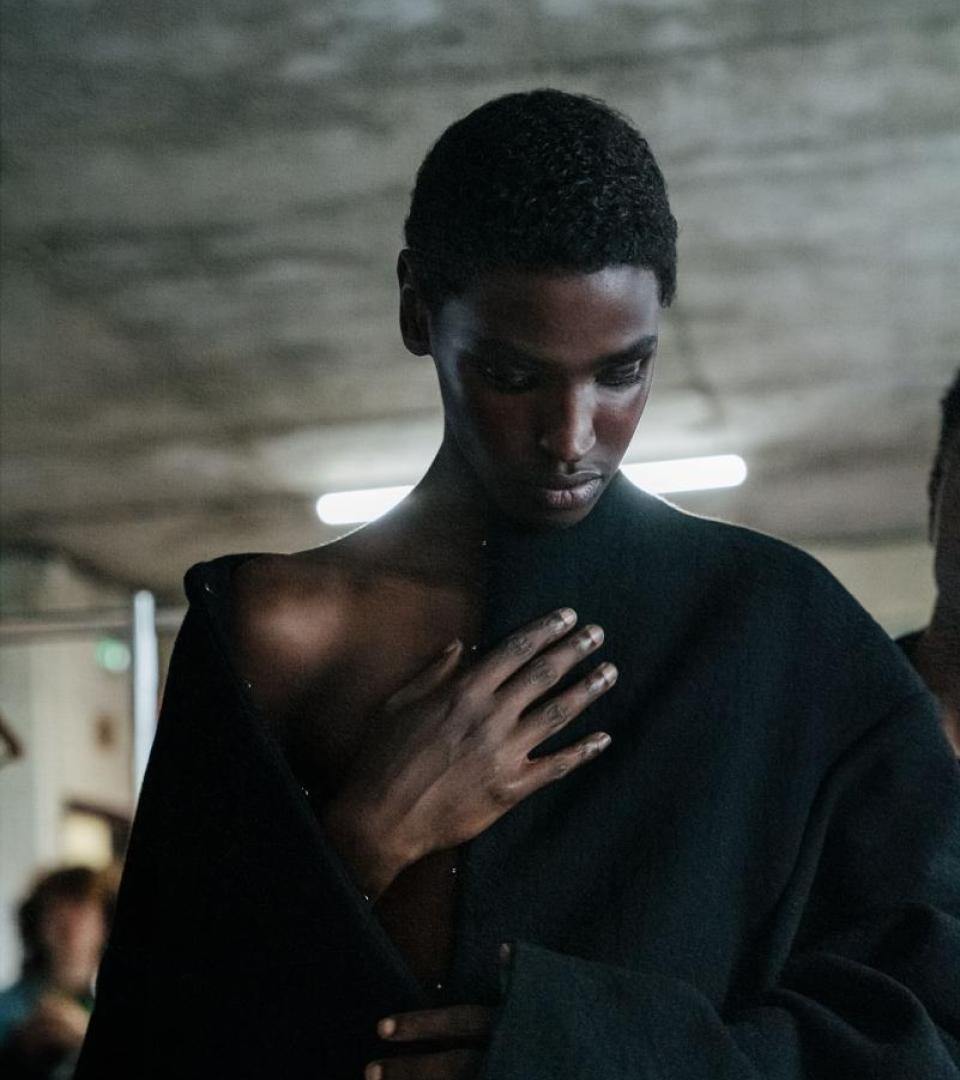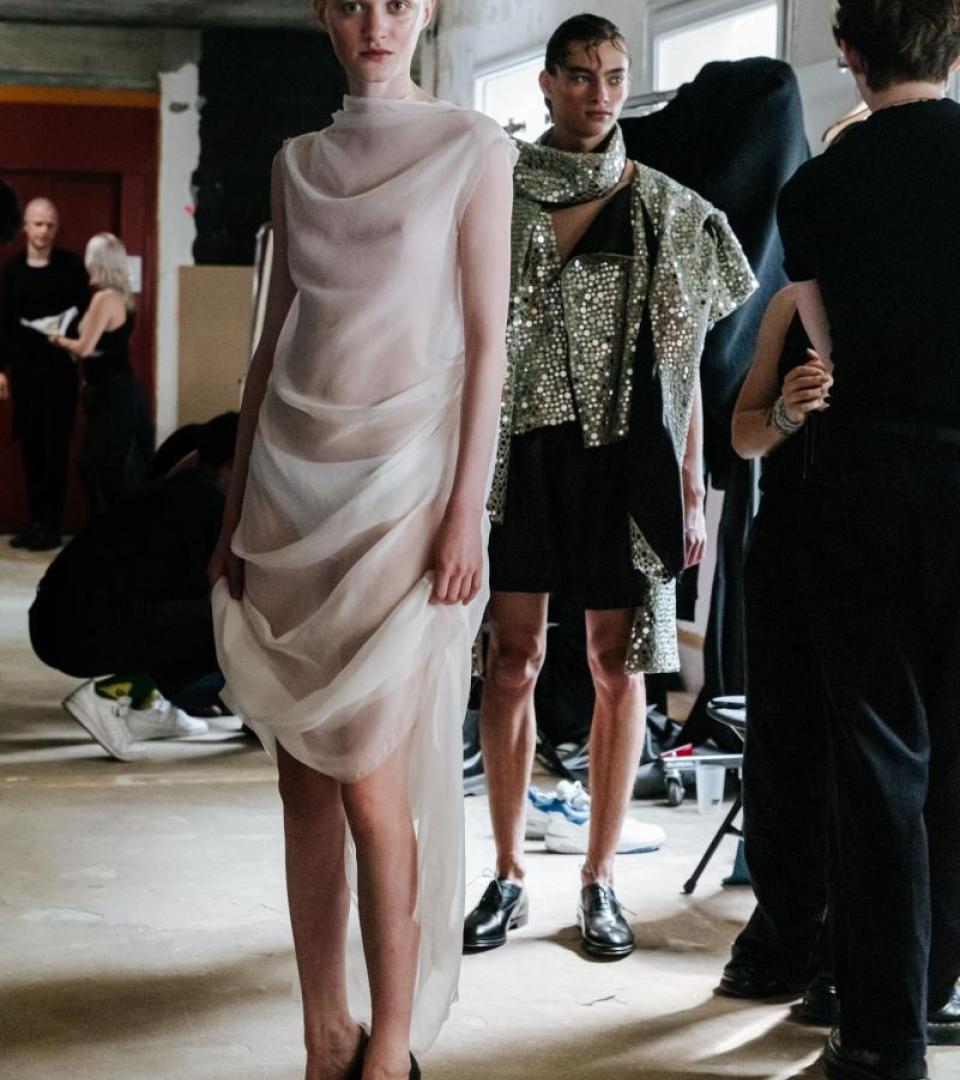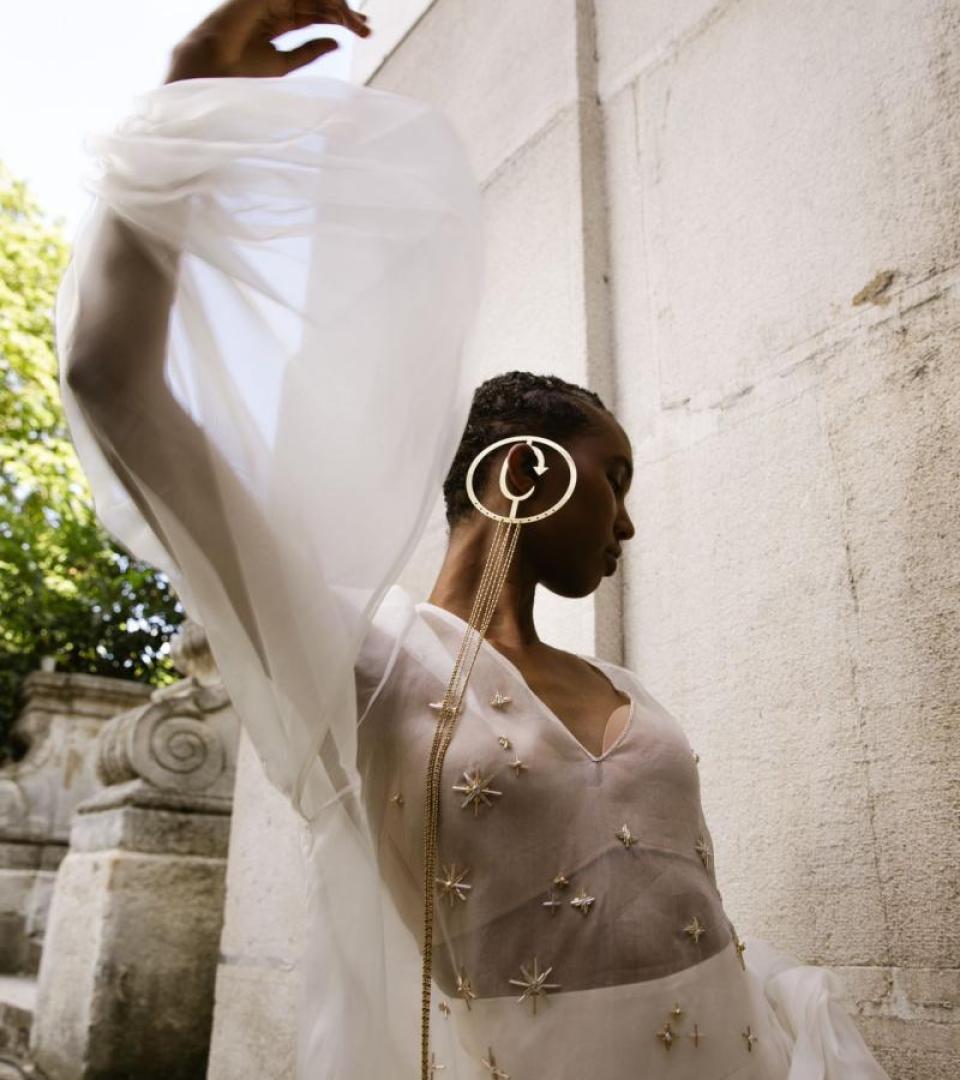What made you choose Paris as the place to showcase your collections?
Paris is always a place that gives brands a chance to make a ‘leap.’ I felt that the mood and spatial presentation we wanted to convey best matched the Parisian atmosphere. Also, it is a place where buyers, editors, and creators from all over the world gather. It was also important that we could show our own colours under a more refined perspective.
Where do you look for new ideas or voices in fashion?
The various emotions that are found in everyday scenes, from very small, delicate, slow to strong, intense, and fast. The silhouettes of people you meet, everyday gestures and facial expressions of intimate friends or strangers, or the atmospheres of a place you suddenly encounter often give you more inspiration. ‘People living here and now’ reflects the times the best, rather than any other renowned thing. In today’s world, where sources of new ideas or voices are becoming increasingly diverse and overflowing, I believe it has become essential for designers to maintain a constant sense of curiosity and a keen perspective. Equally important is having unique way of interpreting what you observe.
In which ways might fashion creativity effectively drive growth?
I think the power to create something new ultimately comes from ‘personal emotions.’
When those emotions are refined and expressed clearly, the direction of the brand or collection also becomes stronger. In times like these, I think creativity is not simply ‘uniqueness’ but rather ‘accurate perspective.’
How essential is heritage and/or a distinctive identity in contributing to a brand’s success?
I think identity is ultimately created through repetition and accumulation. More important than a successful look for one season is how you interpret the times each season and with what perspective and attitude. As that process accumulates and builds up, a brand’s own grammar is created, and that eventually becomes a legacy. So rather than intentionally revealing heritage, I think it’s more important to consistently show the brand’s perspective on the world each time.
What surprises you about the industry in 2025?
Speed. The moment you think you’ve just finished a collection, the pressure of the next season already starts, and you have to create a response almost simultaneously with the show, look-book, video, and even SNS content. However, even in a world where everything moves fast, people are increasingly interested in ‘continuity.’ System is a brand that started in the '90s and has gone through many changes over a long period of time, and it has accumulated layers and weight. I think the current generation is attracted to that ‘accumulated sense’ again, which is a really interesting and meaningful trend.
Who or what is generating the greatest influence in fashion today?
I think this is an era where it is more important to share similar emotions among people than who wears what look. The influence these days comes from the flow of feelings rather than a single trend or specific person. For example, certain colours or silhouettes are naturally repeated on social media, in the streets, and in video content, creating a certain atmosphere. I think brands that quickly capture this flow and digest it in their own way are influential in this era.
How do you think your brand can spark and sustain desire with so much else going on in the world?
I think that desire ultimately comes from the feeling that ‘this outfit describes me now.’ So this season, we focused on how to visualize that ‘feeling.’ We designed the stage so that it could be felt as one experience, including movement, materials, light and sound, and we wanted to create a space for emotions where the audience could project their present. I believe that people still want to be drawn to something, and when that attraction is quiet but lasts a long time, desire is maintained.
There seems to be more overlap between fashion/entertainment and fashion/sports than ever. Thoughts?
I think that these days, fashion is more than just a 'visible' thing; it requires a sense of ‘movement.' Whether it's a performance on stage, a sports game, or even everyday life, fashion must capture people's movements and emotions. So fashion is no longer an independent world, but is connected to various cultural contents, and 'what kind of attitude and rhythm it has' has become more important. In our upcoming presentation, I also tried to naturally express that flow through the way fashion moves with light, wind, and music.
This interview has been lightly edited.



